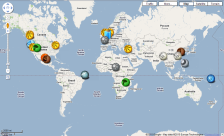Shineanthology’s Weblog
An anthology of optimistic, near future SFArchive for April 26, 2009
Optimism in literature around the World, and SF in particular, part 4: Anime
OK: so this is a particular art form from one country (Japan), and not about the whole of literature & SF in Japan (although I do hope to get a piece about that in the future).
Madeline Ashby was so good as to send me this. Enjoy!
“The World is Made of Love and Peace”: Optimism in SF Anime.
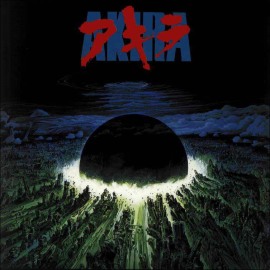 Anime (アニメ, or Japanese animation) has been unkindly described in a variety of ways, many of which will sound familiar to readers and viewers of science fiction accustomed to the pejoratives hurled at their genre of choice: childish, violent, disgusting, derivative, nationalist, misogynist. “Optimistic” isn’t the first word that leaps to mind when one considers the greats of the medium: Akira and Ghost in the Shell have been critically acclaimed for undermining the metanarratives surrounding the body, the nation, reality, and gender, but it’s difficult to argue for hope in a story featuring total body disintegration as a method of escaping governmental observation and control. However, there are other greats neglected by both critics of anime and consumers of traditional science fiction. This post hopes to introduce you to some of them.
Anime (アニメ, or Japanese animation) has been unkindly described in a variety of ways, many of which will sound familiar to readers and viewers of science fiction accustomed to the pejoratives hurled at their genre of choice: childish, violent, disgusting, derivative, nationalist, misogynist. “Optimistic” isn’t the first word that leaps to mind when one considers the greats of the medium: Akira and Ghost in the Shell have been critically acclaimed for undermining the metanarratives surrounding the body, the nation, reality, and gender, but it’s difficult to argue for hope in a story featuring total body disintegration as a method of escaping governmental observation and control. However, there are other greats neglected by both critics of anime and consumers of traditional science fiction. This post hopes to introduce you to some of them.
 To understand optimism in science fiction anime (and, I might argue, to understand Japanese science fiction in general), one must accept the ambiguity inherent in Japanese depictions of advanced technology. This ambiguity stems from two sources: the loss of the natural world in the face of modernization after the Meiji Restoration (a significant loss in a country where priests and priestesses still guard ancient trees), and the catastrophic destruction of Hiroshima and Nagasaki by the atom bomb. Of all the countries that produce post-apocalyptic science fiction, Japan is one of the few that has endured a real apocalypse. It should therefore come as no surprise that Japan’s science fiction is more optimistic than most, but also more realistic about the sacrifices necessary for survival and success. They’ve been there. They know.
To understand optimism in science fiction anime (and, I might argue, to understand Japanese science fiction in general), one must accept the ambiguity inherent in Japanese depictions of advanced technology. This ambiguity stems from two sources: the loss of the natural world in the face of modernization after the Meiji Restoration (a significant loss in a country where priests and priestesses still guard ancient trees), and the catastrophic destruction of Hiroshima and Nagasaki by the atom bomb. Of all the countries that produce post-apocalyptic science fiction, Japan is one of the few that has endured a real apocalypse. It should therefore come as no surprise that Japan’s science fiction is more optimistic than most, but also more realistic about the sacrifices necessary for survival and success. They’ve been there. They know.
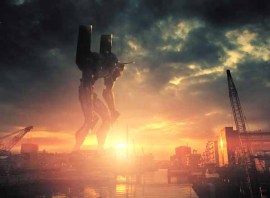 This might be why, although Japan built Heinlein’s “powered suit” into the giant mecha or mobile suit we all know and love, most of the best mecha titles feature anti-heroes who wish desperately that they could put the armour down, or that the armour were no longer necessary. From the Jungian analysis that is Neon Genesis Evangelion (1995) to the alien/human love triangle of Macross Plus (1994) to the bishounen angst-fest of the latter Gundam (1979-present) series, proper stewardship of the giant mecha means having a conscience that shrinks from violence, but also the internal determination to carry it out in order to protect others. The pilots who feel differently, who rejoice solely in battle and find their life’s meaning in chaos and destruction, are frequently depicted as deeply broken people who cannot survive in a peaceful world because they have no bonds or ties keeping them attached to the world of humanity.
This might be why, although Japan built Heinlein’s “powered suit” into the giant mecha or mobile suit we all know and love, most of the best mecha titles feature anti-heroes who wish desperately that they could put the armour down, or that the armour were no longer necessary. From the Jungian analysis that is Neon Genesis Evangelion (1995) to the alien/human love triangle of Macross Plus (1994) to the bishounen angst-fest of the latter Gundam (1979-present) series, proper stewardship of the giant mecha means having a conscience that shrinks from violence, but also the internal determination to carry it out in order to protect others. The pilots who feel differently, who rejoice solely in battle and find their life’s meaning in chaos and destruction, are frequently depicted as deeply broken people who cannot survive in a peaceful world because they have no bonds or ties keeping them attached to the world of humanity.
 This theme of human connection plays itself out in a number of anime titles. It’s a staple among multiple genres, but significant examples abound in SF. The afore-mentioned Evangelion suggests that our affection, however grudging, for our fellow humans may be all that keeps our reality from collapsing. And in Voices of a Distant Star (2002), teen romance survives the vagaries of relativistic time dilation, and the strength of the lovers’ connection gives them the will to continue meeting their civic and military obligations despite living in light years apart. Similarly, the characters in The Place Promised in Our Early Days (2004) know that saving the world will mean wiping out their memories of one another, but trust in their ability to re-connect — and in Japan’s ability to re-unite itself as a nation. This theme of youthful hope for the possibility of enduring love and friendship repeats in The Girl Who Leapt Through Time (2006), in which time travel is a metaphor for adolescence, and growing up means learning that time can’t be stopped and deeds can’t be done over.
This theme of human connection plays itself out in a number of anime titles. It’s a staple among multiple genres, but significant examples abound in SF. The afore-mentioned Evangelion suggests that our affection, however grudging, for our fellow humans may be all that keeps our reality from collapsing. And in Voices of a Distant Star (2002), teen romance survives the vagaries of relativistic time dilation, and the strength of the lovers’ connection gives them the will to continue meeting their civic and military obligations despite living in light years apart. Similarly, the characters in The Place Promised in Our Early Days (2004) know that saving the world will mean wiping out their memories of one another, but trust in their ability to re-connect — and in Japan’s ability to re-unite itself as a nation. This theme of youthful hope for the possibility of enduring love and friendship repeats in The Girl Who Leapt Through Time (2006), in which time travel is a metaphor for adolescence, and growing up means learning that time can’t be stopped and deeds can’t be done over.
 Adolescence is the time when most of us begin engaging in self-definition, frequently through relationships (or conflicts) with the Other. SF anime is replete with stories about this phenomenon. Consider Nausicaä of the Valley of the Wind, Miyazaki Hayao’s 1984 story of Nausicaä, a young pilot and amateur biologist seeking to learn the secret to reviving the “Sea of Corruption,” a toxic wasteland inhabited by the Ohmu, a prehistoric race of sentient insects. Despite their ugliness and their predilection for violence, Nausicaä takes the side of the Ohmu when a group of humans steal a larval Ohmu in an attempt to divert the wrathful, rampaging herd toward their enemies.
Adolescence is the time when most of us begin engaging in self-definition, frequently through relationships (or conflicts) with the Other. SF anime is replete with stories about this phenomenon. Consider Nausicaä of the Valley of the Wind, Miyazaki Hayao’s 1984 story of Nausicaä, a young pilot and amateur biologist seeking to learn the secret to reviving the “Sea of Corruption,” a toxic wasteland inhabited by the Ohmu, a prehistoric race of sentient insects. Despite their ugliness and their predilection for violence, Nausicaä takes the side of the Ohmu when a group of humans steal a larval Ohmu in an attempt to divert the wrathful, rampaging herd toward their enemies.
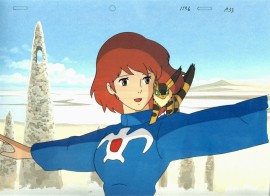 Miyazaki does not have a monopoly on stories about flight or strong young women, however. A similar story plays out in Eureka 7 (2006). The series starts out in a very traditional way (a young boy named Renton who dreams of piloting a giant mech gets the opportunity to do so, and in the process falls in love with an otherworldly girl), but manages to undermine many of anime’s longest-held tropes while still utilizing and exploring them. Renton may have skill with the mech, but he still gets air-sick in the cockpit and occasionally flees his responsibilities when things get too difficult. Eureka may be a beautiful hybrid of humans and the sentient Scub Coral, but the story continually emphasizes her Other-ness through grotesque metamorphoses and repeated (and quite painful) misunderstandings of human motivation. As bildungsromans go, this one has a slow start but comes to a satisfying conclusion because everyone grows up and learns more about their world — including the grown-ups. Plus, the writers make reference to everything from the Beastie Boys to Greg Egan.
Miyazaki does not have a monopoly on stories about flight or strong young women, however. A similar story plays out in Eureka 7 (2006). The series starts out in a very traditional way (a young boy named Renton who dreams of piloting a giant mech gets the opportunity to do so, and in the process falls in love with an otherworldly girl), but manages to undermine many of anime’s longest-held tropes while still utilizing and exploring them. Renton may have skill with the mech, but he still gets air-sick in the cockpit and occasionally flees his responsibilities when things get too difficult. Eureka may be a beautiful hybrid of humans and the sentient Scub Coral, but the story continually emphasizes her Other-ness through grotesque metamorphoses and repeated (and quite painful) misunderstandings of human motivation. As bildungsromans go, this one has a slow start but comes to a satisfying conclusion because everyone grows up and learns more about their world — including the grown-ups. Plus, the writers make reference to everything from the Beastie Boys to Greg Egan.

Overwhelmingly, anime creates an optimistic sentiment not by depicting a utopian future, but by locating the reason for hope in humanity’s ability to make the right decision — to sacrifice, to embrace, to re-build. In the face of apocalyptic destruction, impossible odds, and a long record of mistakes and misdeeds, the heroes (and anti-heroes) of anime maintain a stalwart faith in heir fellow men and women. Case in point, the source of this post’s title, Vash the Stampede, star of Trigun (1998). Like Eureka (whom he clearly inspired), Vash is a sentient-but-alien creature with the capacity to wreak terrible destruction on the humans of his planet. His Plant DNA lets him live far longer than most humans, and he can regenerate from mortal wounds (though he often chooses not to, perhaps in order to maintain empathy for the short-lived people he’s sworn to protect). Despite having every reason to hate humans (they killed his sister and most of his species), and despite living as a fugitive thanks to the massive bounty on his head, Vash stays positive, goofs off, and does his best to help the downtrodden. A crack shot, he refuses to kill even when massively outgunned.
 Optimism in sf anime might best be summed up by this moment from Trigun: Vash, unarmed against cannon-wielding post-human thugs, pauses and smiles. Taunted by his enemy about the lives he must have destroyed to survive so long, he reaches for the last weapon in his arsenal: a child’s toy gun. He covers the man in suction-cup darts, grins and says: “Can’t we just quit? After all, the world is made of LOVE AND PEACE! LOVE AND PEACE! LOVE AND PEACE!”
Optimism in sf anime might best be summed up by this moment from Trigun: Vash, unarmed against cannon-wielding post-human thugs, pauses and smiles. Taunted by his enemy about the lives he must have destroyed to survive so long, he reaches for the last weapon in his arsenal: a child’s toy gun. He covers the man in suction-cup darts, grins and says: “Can’t we just quit? After all, the world is made of LOVE AND PEACE! LOVE AND PEACE! LOVE AND PEACE!”
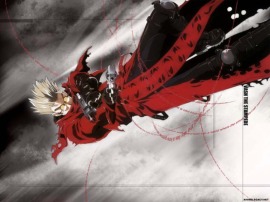 His enemy falls, literally bowled over by the audacity, the sheer madness, the undefeated spirit, of the man before him. He’s stupid. He’s crazy. He’s dangerous.
His enemy falls, literally bowled over by the audacity, the sheer madness, the undefeated spirit, of the man before him. He’s stupid. He’s crazy. He’s dangerous.
But he wins. He always wins.
***
NB: check out the SHINE COMPETITION, PRIZES & RULES (four days left)!
***
For more information on SF anime, I suggest Mechademia, the journal of anime and manga, as well as the November 2002 issue of Science Fiction Studies, which focused on Japanese SF, and Fullmetal Apache: Transactions Between Cyberpunk Japan and Avant-Pop America.
 Madeline Ashby is a graduate student, otaku, teacher, and immigrant. She has lived on the outskirts of Los Angeles, Seattle, and Toronto, where she is now a member of the Cecil Street Irregulars and a contributor to both Frames Per Second Magazine and WorldChanging Canada. She speaks a smattering of Spanish, French, and Japanese. Her fiction has been published in Tesseracts and FLURB. Hopefully that list will lengthen as time passes.
Madeline Ashby is a graduate student, otaku, teacher, and immigrant. She has lived on the outskirts of Los Angeles, Seattle, and Toronto, where she is now a member of the Cecil Street Irregulars and a contributor to both Frames Per Second Magazine and WorldChanging Canada. She speaks a smattering of Spanish, French, and Japanese. Her fiction has been published in Tesseracts and FLURB. Hopefully that list will lengthen as time passes.












